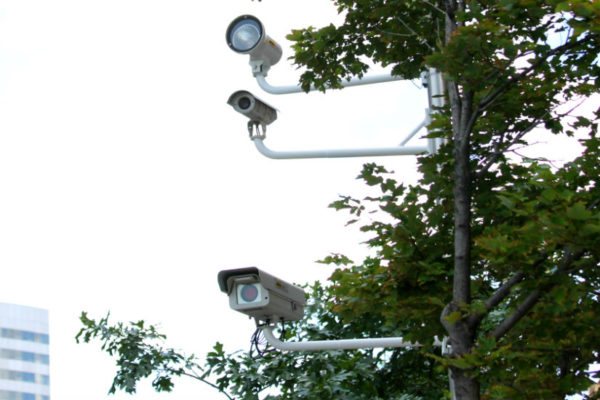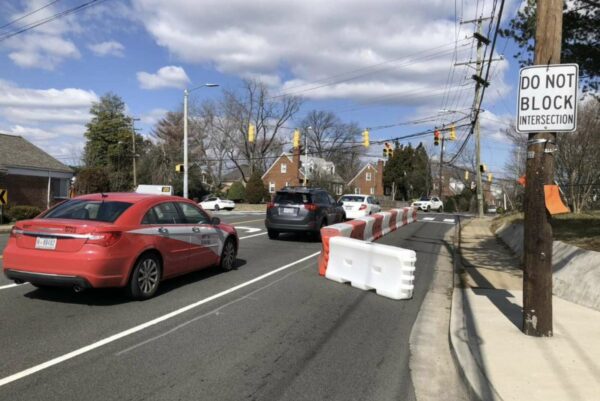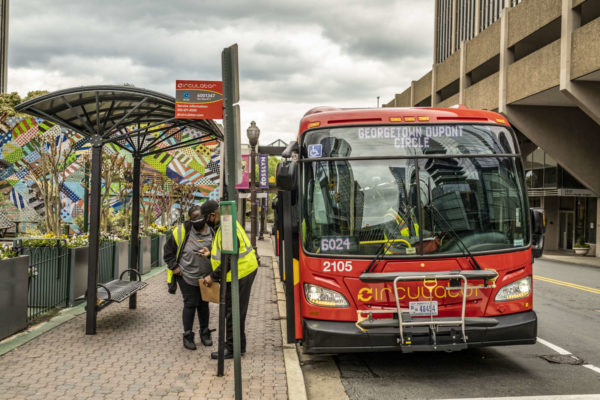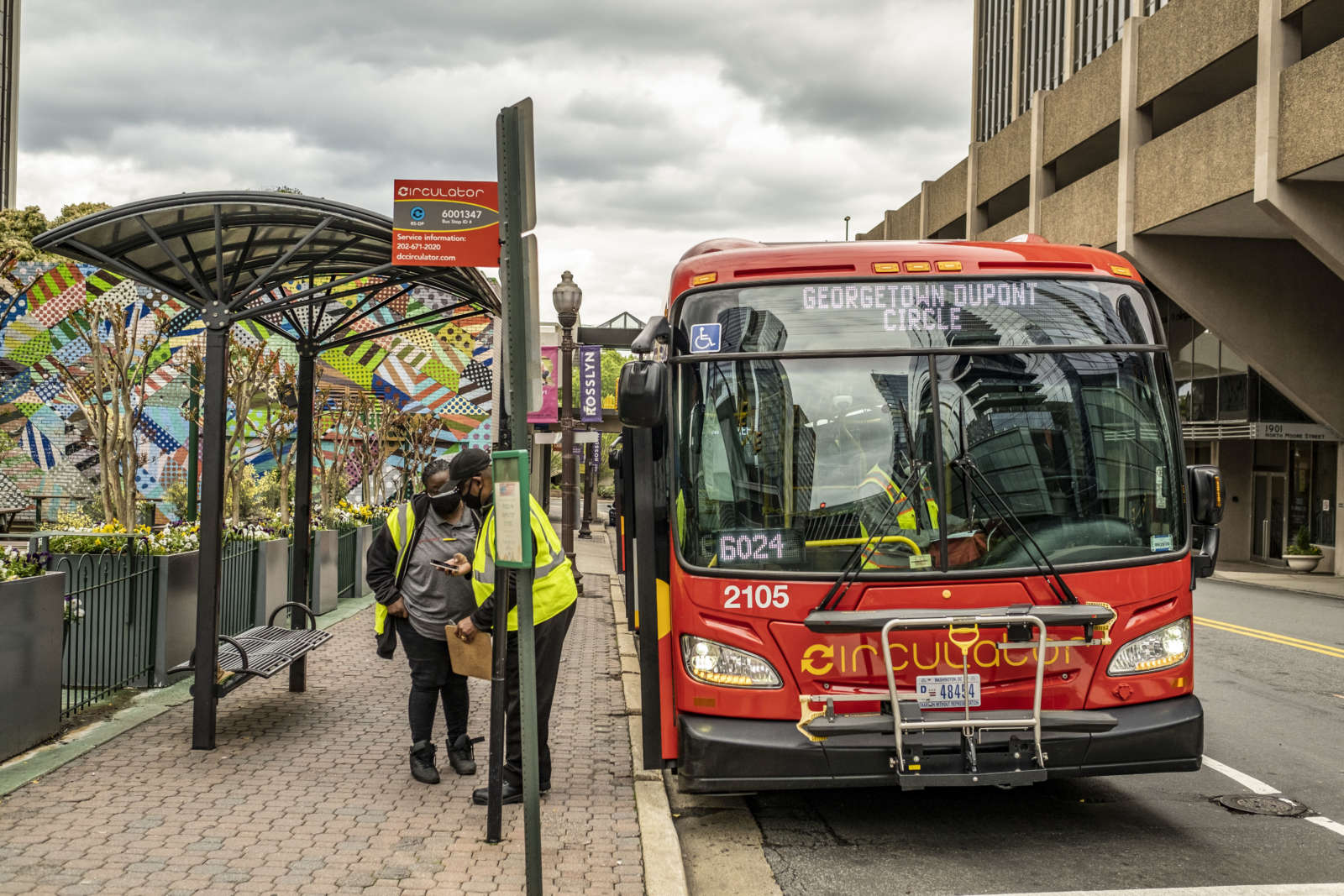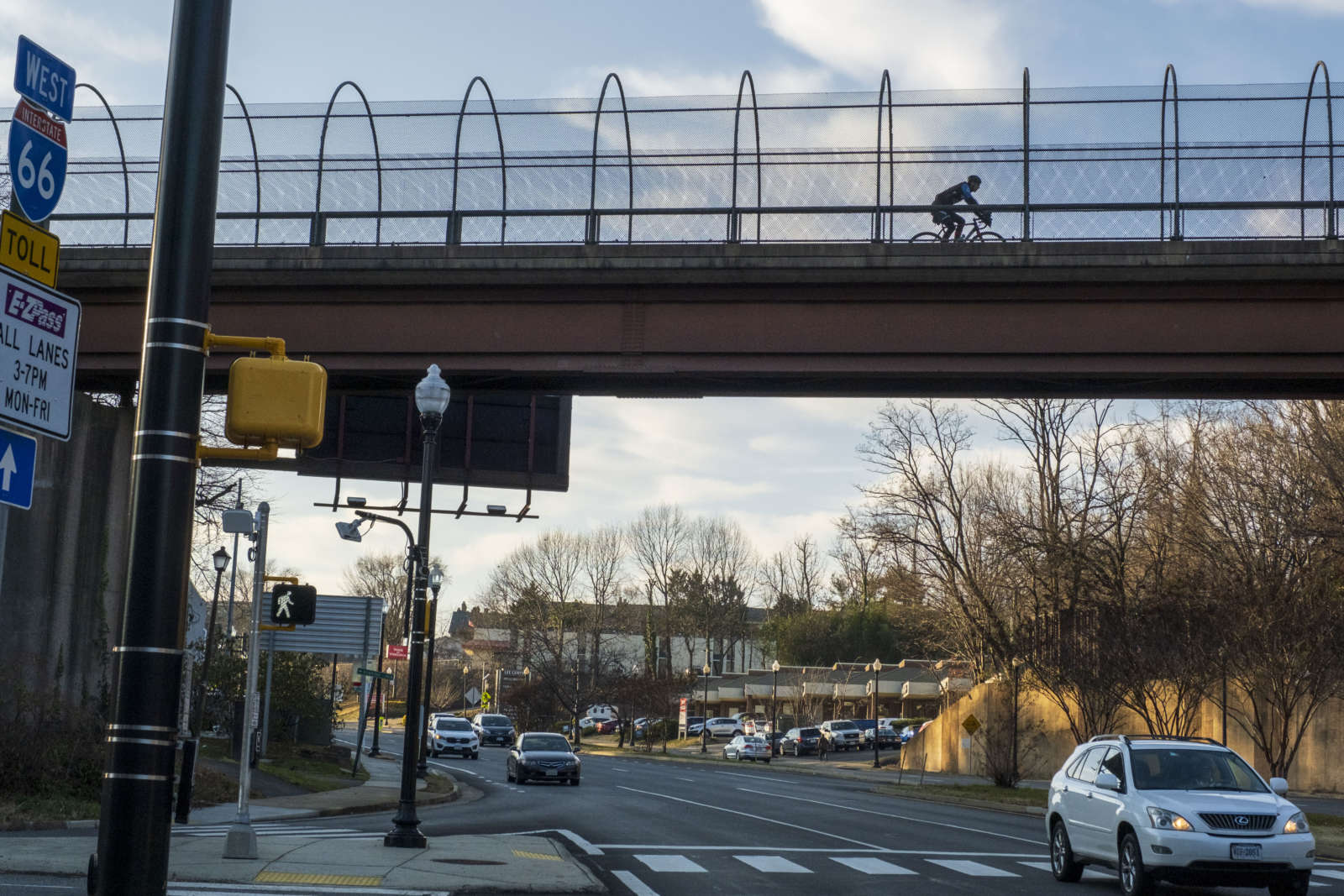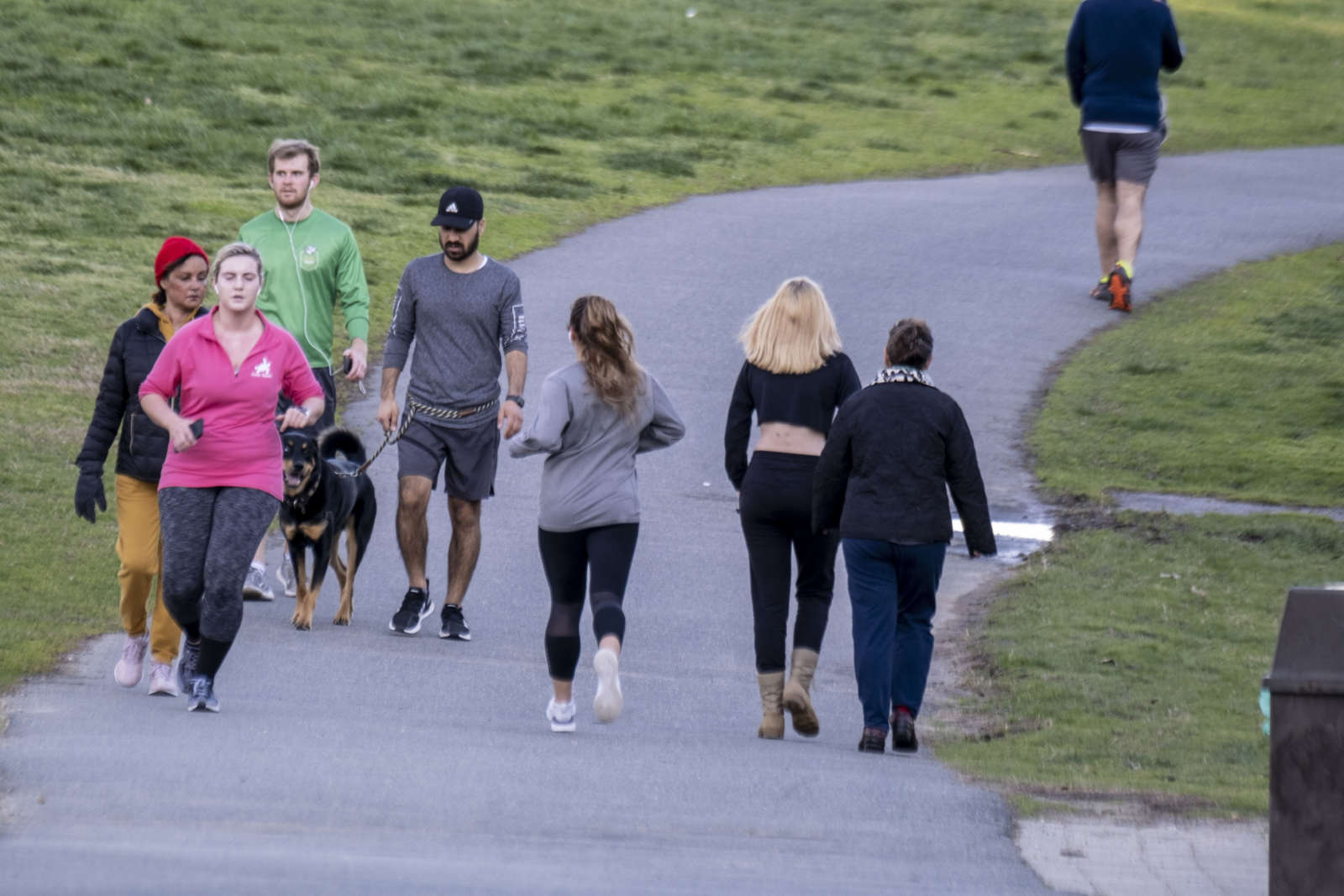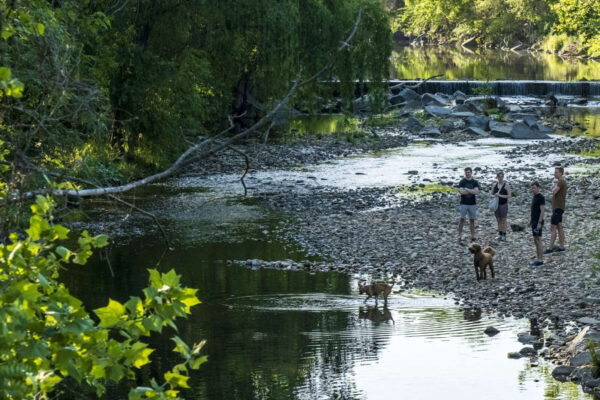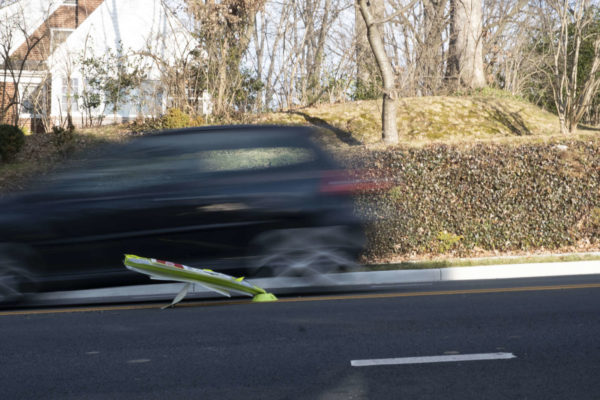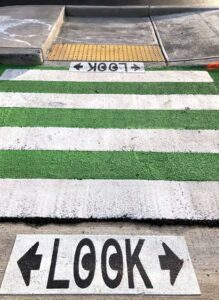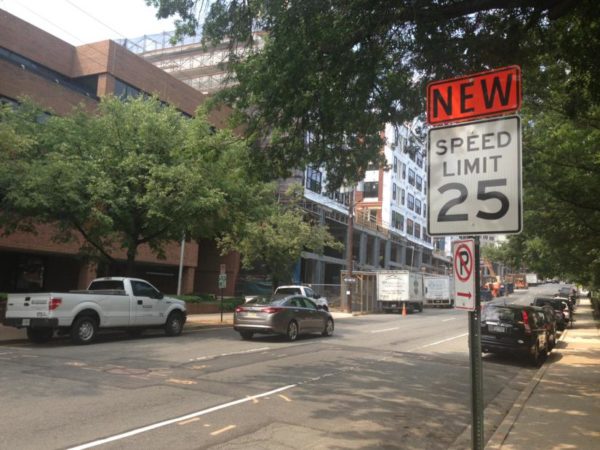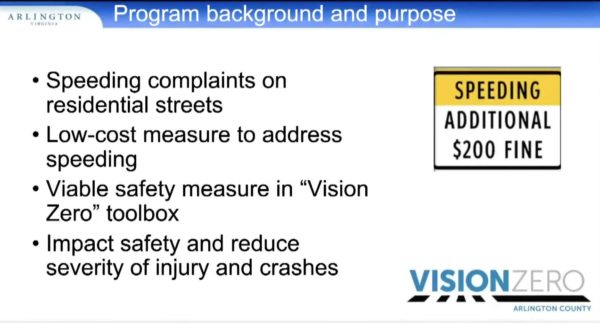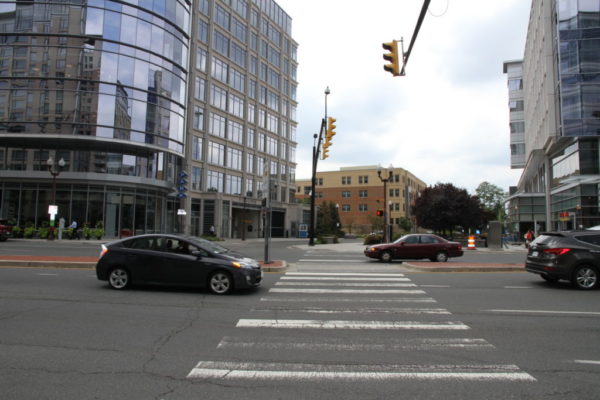Arlington County could start cracking down on speeding near schools and highway work zones with newly-allowed speed cameras.
This weekend, the Arlington County Board is scheduled to set a public hearing for its Jan. 22 meeting on the question of whether to install speed cameras.
Currently, Arlington County only has cameras that capture red-light violations, but in 2020 the Virginia General Assembly allowed localities to install radar-based speed detectors around school crossing zones and highway work zones. Now, the county is poised to consider adding 10 movable cameras to these zones.
Cameras will improve street safety and make enforcement more equitable while reducing public interactions with police officers, according to a county staff report.
“Automated speed enforcement will significantly advance Arlington County’s transportation safety and equity initiatives as stated through the Vision Zero Action Plan and Police Practices Group Recommendations and leads to considerable reductions in speeding, crashes resulting in injuries, and total crashes — thereby making roadways safer for all users,” the report said.
“Automated speed enforcement also reduces unnecessary interactions between residents and police and further advances confidence in equitable outcomes by reducing or eliminating the possibility of race-and ethnicity-based disparities in traffic enforcement,” the report continues.
State code requires that localities post signs informing drivers of speed cameras and sets the threshold for enforcement at more than 10 mph over the speed limit. Fines cannot exceed $100, and speeding violations do not add points on a driver’s license nor are they considered for insurance purposes, per the state code.
Arlington is proposing a $50 fine for violations. It would match the current $50 fine for red-light violations captured by red-light cameras and fulfill a recommendation from the county’s Police Practices Group, according to the county report.
The group initially recommended calculating fines based on the speeding driver’s income and fixed expenses, the county report said. Since state law doesn’t currently allow such a sliding scale, the group suggested a lower fine and 30-day grace period after cameras are installed.
Before installing the cameras, Arlington County will focus conduct “a robust educational plan,” per the report.
“This plan will include significant outreach across the County to ensure a broad range of residents with different experiences and backgrounds receive information on placement and implementation,” it said.
An unscientific ARLnow poll this summer found that respondents are divided on traffic enforcement: about one-third of respondents wanted to see more speed cameras, while 45% wanted more red light cameras and just over half did not want more enforcement from either type of camera..
Arlington will hire transportation safety consultants to develop guidelines for placing cameras in school zones, using a $60,000 grant from the Metropolitan Washington Council of Governments. Camera placement can change in response to data on speeding, citations, crashes and transportation volumes.
The police department estimates installing and maintaining 10 cameras, and hiring a full-time employee to manage the speed camera program, will cost about $600,000 a year, the report said. Arlington County expects fines to offset the ongoing costs of the program.
Last year, the County Board asked the state to expand the use of speed cameras beyond school and highway work zones.


